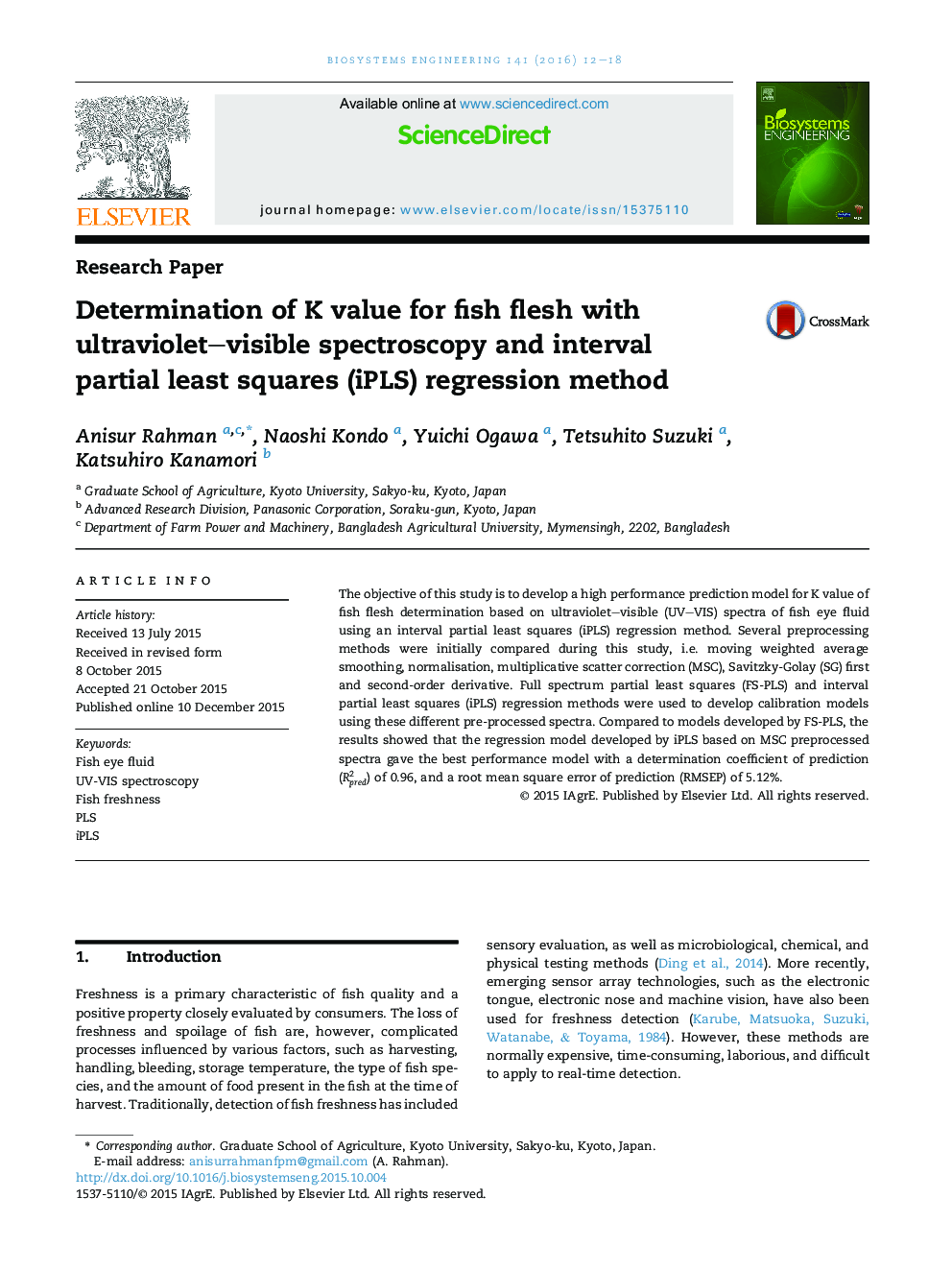| Article ID | Journal | Published Year | Pages | File Type |
|---|---|---|---|---|
| 1710863 | Biosystems Engineering | 2016 | 7 Pages |
•UV–VIS spectra of fish eye fluid are used to predict K value of fish flesh.•Develop a calibration model using FS-PLS and iPLS regression techniques.•The result of FS-PLS and iPLS regression techniques is compared.•Best calibration model is observed using iPLS regression method.
The objective of this study is to develop a high performance prediction model for K value of fish flesh determination based on ultraviolet–visible (UV–VIS) spectra of fish eye fluid using an interval partial least squares (iPLS) regression method. Several preprocessing methods were initially compared during this study, i.e. moving weighted average smoothing, normalisation, multiplicative scatter correction (MSC), Savitzky-Golay (SG) first and second-order derivative. Full spectrum partial least squares (FS-PLS) and interval partial least squares (iPLS) regression methods were used to develop calibration models using these different pre-processed spectra. Compared to models developed by FS-PLS, the results showed that the regression model developed by iPLS based on MSC preprocessed spectra gave the best performance model with a determination coefficient of prediction (Rpred2) of 0.96, and a root mean square error of prediction (RMSEP) of 5.12%.
